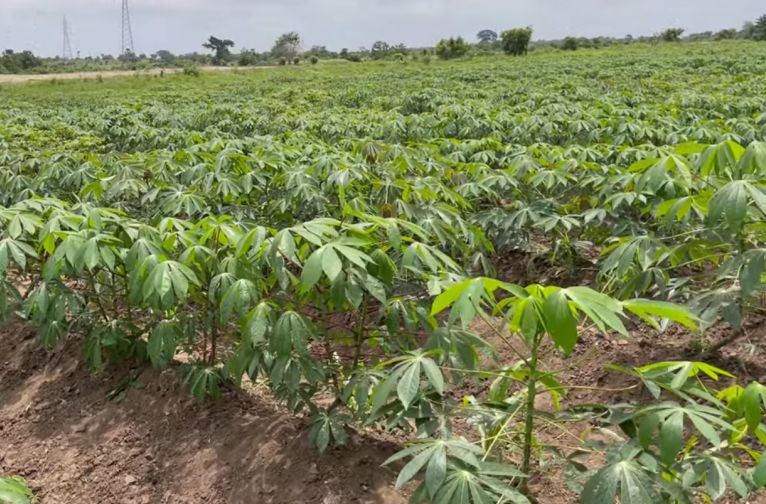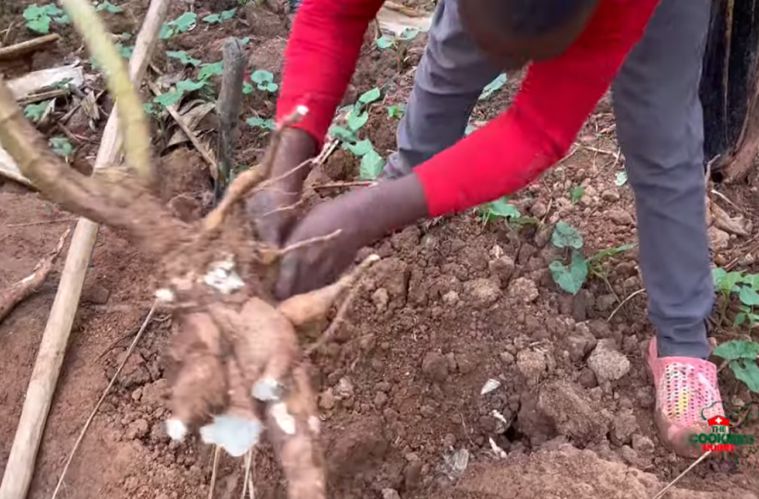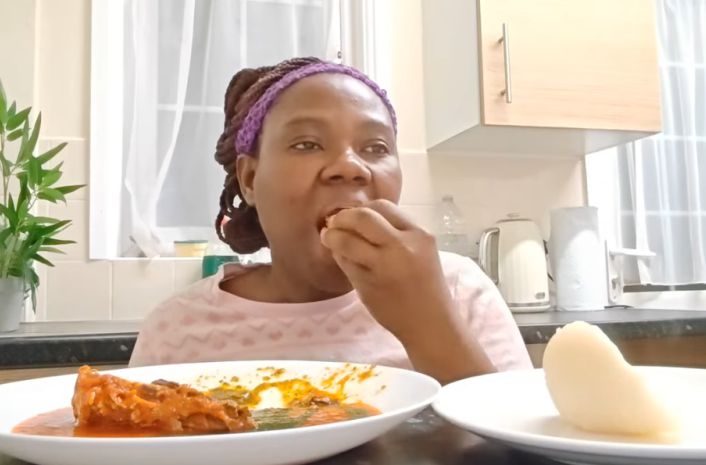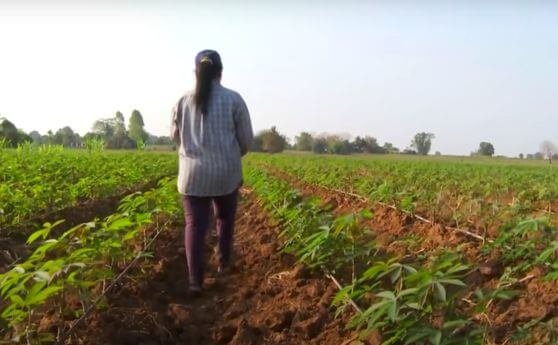The cassava value chain is the various stages, from cultivation to processing and consumption, involving multiple key players. Here is everything to know.
The cassava value chain is an interesting one as a staple crop for millions, especially in tropical regions like West Africa.
It thrives in poor soil and unpredictable weather, making it a reliable food source in countries like Nigeria, one of the world’s top producers.
You’ll find cassava in many forms, fufu, garri, cassava flour, tapioca, and other fermented products, each playing a role in local diets and food security.
Cassava isn’t just about feeding households. It fuels industries, supplying starch for food production, livestock feed, textiles, pharmaceuticals, and even biofuels.
In the cassava value chain, its demand extends beyond local markets, shaping trade and economic policies in cassava-producing nations.
From the farm to the final product, cassava passes through multiple stages, cultivation, harvesting, processing, marketing, and consumption. Each step of the cassava value chain affects quality, price, and accessibility.
Whether you’re a farmer looking to improve yield, a processor aiming for better efficiency, or an investor seeking market opportunities, understanding this chain of participation is needed to recognize growth opportunities, improve efficiency, and the benefits of cassava, and improve the livelihoods of farmers, processors, and consumers alike.
This guide will walk you through every stage, showing you where the challenges lie and how to tap into the opportunities that cassava presents.
Recommended: Guide to Cassava Processing Machines and Tools
Key Takeaway
- Understanding the cassava value chain is crucial for growth and efficiency
- Key components of the cassava value chain include production, processing, distribution, marketing, and consumption.
- The cassava value chain faces several challenges, including inefficient production processes, inadequate infrastructure, and limited access to markets.
- Governments can play a crucial role in supporting farmers, promoting value-added processing, and facilitating market linkages and trade policies.
Table of Contents
- Key Takeaway
- Cassava Value Chain Definition
- How the Cassava Value Chain Works
- Products in the Cassava Value Chain and Their Roles
- Challenges in the Cassava Value Chain
- Lucrative Opportunities in the Mandioca Value Chain
- Factors that Guarantee the Success of the Cassava Value Chain
- Government’s Role in the Yuca Value Chain
- FAQS about the Manioc Value Chain
- Final Word from Cassava Pathway
Cassava Value Chain Definition
The cassava value chain is the journey cassava takes from farm to table, or factory. You’re part of it whether you grow, process, trade, or buy cassava-based products.
The chain begins with cassava cultivation and harvesting. Traders, manufacturers, and exporters then connect these products to local and global markets. We the cassava farmers alos play the roles of traders and exporters to maximize profits.
How smoothly this chain runs depends on infrastructure, technology, policies, and market access.
Strong links mean less waste, better profits, and a steady supply of cassava for food, industry, and export. Weak links lead to losses and missed opportunities.
So, whether you’re a farmer looking for better yields, a processor refining cassava into high-demand products, or a trader eyeing new markets, understanding this chain helps you maximize value at every step.
Related: The Place of Cassava Roots in the Global Market
How the Cassava Value Chain Works
As a cassava farmer of many years, my cassava value chain starts from planting and harvesting cassava roots, then moves through transportation, storage, and processing into products like cassava flour, starch, and animal feed.
Cassava Farming and Production in the Value Chain

The cassava value chain of course starts with cassava farming through land clearing, cultivation and planting of cassava stems.
Cassava is vital in agriculture, particularly in Nigeria’s value chain. It thrives in sandy loam soil with good drainage, warm temperatures (25°C–30°C), and 1,000–2,000 mm of rainfall.
Serving as both food and an economic asset, cassava varieties differ in yield, disease resistance, and cyanide content.
Improved types like TME 419 offer high productivity, while bitter cassava suits specific products.
Proper land preparation, including tillage and ridging, ensures healthy root growth. Farmers plant 20–30 cm stem cuttings with multiple nodes for optimal sprouting.
Effective management, including weeding, fertilization, and pest control, boosts yields. Continuous monitoring enhances efficiency, keeping the cassava value chain productive and profitable for farmers.
Related: How to Profit from the Cassava Value Chain
Harvesting and Post-Harvesting in the Cassava Value Chain

The cassava value chain starts with harvesting, which requires proper timing and technique to maximize yield and quality.
Most varieties are ready within 6 to 12 months, depending on growing conditions. Yellowing leaves and dying foliage signal maturity. Checking root size also helps determine the right time.
Careful harvesting prevents damage. Using a spade or hoe to loosen the soil before pulling out the roots reduces bruising and spoilage.
Once harvested, cassava spoils within 2 to 5 days if not processed or stored properly. Washing and sorting the roots immediately improves quality.
Storing cassava in a cool place, refrigerating, or freezing extends shelf life. Proper handling reduces losses, increases market value, and strengthens the cassava value chain.
Related: Tapioca, a Key Product of the Cassava Value Chain
Processing and Value Addition in the Value Chain

The cassava value chain relies on processing to transform raw tubers into food, industrial products, and biofuels.
Traditional methods like peeling, drying, and fermentation create staples such as cassava flakes or garri, tapioca and fufu.
Peeling removes toxins, while drying extends shelf life and enhances flavor. Fermentation improves texture and nutritional value, making cassava a key ingredient in many global cuisines.
Modern processing increases efficiency and expands cassava’s applications. Milling technology produces fine cassava flour for baking, while starch extraction supports industries like food, textiles, and paper.
Cassava is also used in biofuel production, where fermentation converts it into ethanol. Both traditional and industrial processing strengthen the cassava value chain, supporting food security, trade, and economic development worldwide.
Distribution, Market and Trade in the Cassava Value Chain
The cassava value chain connects farmers, processors, and industries worldwide. Cassava is a major staple crop in tropical regions, with top producers including Nigeria, Brazil, Thailand, and Indonesia.
Demand and distribution is rising due to its role in food production and industries like starch processing, biofuels, and animal feed.
Locally, cassava is used for food products like garri, fufu, and flour. Globally, the gluten-free trend has boosted cassava-based goods, while industries rely on cassava starch for food, textiles, and pharmaceuticals.
Prices fluctuate based on seasonal harvests, climate conditions, and trade policies. Poor infrastructure and export restrictions can limit market access.
Understanding these factors helps businesses and farmers navigate the cassava value chain and seize trade opportunities.
Consumption in the Cassava Value Chain

You play a role in the cassava value chain every time you eat cassava-based foods or use its byproducts.
Fresh cassava roots, garri, fufu, and cassava flour are common on your plate, while industries turn cassava starch into sweeteners, ethanol, and animal feed.
Your choices influence farmers, processors, and markets, driving production and innovation. Proper packaging and distribution keep cassava products safe and accessible.
Whether you’re enjoying a meal or using cassava-based products, you support food security, rural livelihoods, and economic growth.
The cycle starts with farming and ends with you, making cassava a key player in global agriculture and trade.
Related: The Cassava Roots Glut Season and Remedies
Products in the Cassava Value Chain and Their Roles
Cassava plays a central role in food security, industry, and trade. From fresh roots to advanced derivatives, every product has a place in the cassava value chain, adding value, creating jobs, and meeting local and global demand across agriculture, processing, manufacturing, and energy sectors.
Cassava Tubers
Role in the Value Chain: Primary raw material for all cassava products.
Fresh cassava roots are the starting point of the value chain. They are harvested, sold fresh in local markets, or sent to processors for further transformation into flour, starch, feed, or fuel.
Their perishability drives demand for fast processing or preservation methods like drying or fermentation.
Cassava Chips
Role in the Value Chain: Intermediate product for food and industrial processing.
Chips are dried slices of cassava roots used as a snack, animal feed, or raw material for flour and ethanol.
They reduce post-harvest losses, ease transportation, and increase shelf life, making them valuable for both domestic processing and international export markets.
Cassava Flour
Role in the Value Chain: Wheat alternative in food and bakery industries.
Used in homes and bakeries, cassava flour supports gluten-free diets. It’s used for pastries, bread, pancakes, and thickeners.
High-Quality Cassava Flour (HQCF) also supports smallholder farmers and agribusinesses by replacing wheat imports and fueling local food manufacturing.
Garri (or Gari)
Role in the Value Chain: Widely consumed staple food in West Africa.
Garri is a fermented, roasted granular flour made from cassava. It’s a major food product in West Africa, eaten directly or cooked into meals.
Its processing adds value locally, creates employment, and preserves cassava for longer shelf life and easier distribution.
Fufu (Cassava Dough)
Role in the Value Chain: Traditional African staple with cultural and dietary importance.
Made by fermenting and pounding cassava, fufu is a high-energy staple eaten with soups.
It’s processed at small-scale and industrial levels, creating demand for peeled and fermented cassava.
Its popularity supports local food processors and sustains traditional food systems.
Cassava Starch
Role in the Value Chain: Industrial and food thickener, binder, and stabilizer.
Native cassava starch is used in food processing, pharmaceuticals, textiles, adhesives, and paper.
It’s extracted from grated cassava and dried into powder. Its demand stimulates agro-processing businesses and enables cassava to serve as a local raw material in various manufacturing industries.
Modified Cassava Starch
Role in the Value Chain: Enhances cassava’s industrial and technological applications.
Modified starch undergoes chemical, physical, or enzymatic treatments to improve resistance to heat, acid, and shear.
It’s used in advanced industries like oil drilling, food processing, and paper. It extends cassava’s value chain into high-tech and export markets.
Tapioca Pearls
Role: Processed food product for beverages and desserts.
These chewy balls made from cassava starch are popular in drinks like bubble tea and desserts.
Their production boosts the commercial use of cassava starch, opening markets in food service, retail, and exports, especially in Asia and urban regions worldwide.
Animal Feed
Role in the Value Chain: Secondary product, reducing waste and feeding livestock.
Cassava peels, pulp, and chips are used in livestock feed.
They’re rich in carbohydrates and cost-effective for feeding pigs, poultry, and ruminants.
Processing cassava for feed adds value to by-products, reduces waste, and supports integrated farming and agribusiness systems.
Ethanol (Biofuel)
Role in the Value Chain: Renewable energy from cassava fermentation.
Cassava’s high starch content makes it ideal for ethanol production. Ethanol serves as biofuel, industrial alcohol, and sanitizer.
Its production boosts cassava’s contribution to clean energy, offers a market for surplus roots, and creates rural jobs in distillation and fermentation.
Cassava Pulp
Role in the Value Chain: By-product for feed, biogas, and compost.
Pulp is the fibrous residue left after starch extraction. It’s high in fiber and used in animal feed, biogas production, or compost.
It ensures resource efficiency and supports circular agriculture by converting waste into value-added products.
Cassava Peels
Role in the Value Chain: Agricultural waste turned into usable inputs.
Peels are a major waste by-product but can be processed into animal feed or organic fertilizers.
With proper detoxification, they provide economic and environmental benefits, reducing pollution and increasing feed availability for livestock farmers.
Cassava Syrup
Role in the Value Chain: Sweetener for food and beverage industries.
Hydrolyzed cassava starch can be converted into glucose or fructose syrup.
These syrups serve as natural sweeteners in soft drinks, jams, and confections, replacing corn syrup and creating a niche market in cassava-based liquid sweeteners.
Cassava Beer (Local Alcohol)
Role in the Value Chain: Traditional and commercial alcoholic beverage.
In several African and Latin American countries, cassava is used to brew traditional beers and liquors.
This supports cottage industries and formal breweries that source cassava as a cost-effective, local alternative to barley or maize.
Cassava Pellets
Role in the Value Chain: Export-grade animal feed or starch source.
Compressed from chips or dried mash, pellets are durable for storage and long-distance shipping.
They are exported as industrial feed or for further starch extraction. This product strengthens cassava’s role in global trade and agro-export chains.
Related: The Cassava Packaging Market: Growth and Trends
Challenges in the Cassava Value Chain

The cassava value chain struggles with inefficient production, poor infrastructure, and weak market access.
Cassava spoils quickly, and without proper storage or processing, large portions of the harvest go to waste.
Poor handling and inadequate facilities worsen losses, cutting profits and reducing supply.
Many farmers still use traditional methods, making it difficult to produce high-quality flour, starch, or ethanol, and without modern equipment, meeting industrial demand is a challenge.
Small-scale farmers also struggle to reach buyers, leading to price instability and wasted harvests.
Cassava pests and diseases is another challenge. Pests like mealybugs and mites, along with diseases such as cassava mosaic and brown streak disease, threaten yields.
Lack of research also hinders the desired performance of the value chain. More on challenges of the cassava value chain.
Soil depletion, high input costs, lack of transparency, and minimal research further weaken the chain. See a comprehensive article on challenges of the cassava value chain.
Lucrative Opportunities in the Mandioca Value Chain

The cassava value chain holds promising opportunities that can reshape farming and processing, including investment opportunities.
New disease-resistant cassava varieties and precision agriculture help increase yields and reduce losses.
Improved processing methods, such as better drying and fermentation techniques, create higher-quality products for local and international markets.
Growing demand for gluten-free alternatives has opened new markets for cassava flour, starch, and snacks.
Consumers looking for wheat substitutes see cassava as a nutritious option, increasing income potential for farmers and processors.
Sustainable farming methods like intercropping and agroforestry improve soil fertility and help cassava farming adapt to climate change.
By embracing technologies like production of high quality cassava flour, and eco-friendly practices, cassava producers can boost food security, strengthen economies, and build a more resilient agricultural system.
Related: How to Produce Cassava Flour
Factors that Guarantee the Success of the Cassava Value Chain
To succeed in the manioc value chain, entrepreneurs must consider the following key factors:
1. Access to Raw Materials: Ensure reliable supply through outgrower schemes with farmer associations and cooperatives. Provide resources, training, and support.
2. Strategic Location: The site is close to cassava-producing areas to minimize transport costs. Proximity to markets is also essential.
3. Cost-Efficient Production: Adopt labor-saving technologies like peelers and graters to reduce hiring. Maintain high-capacity utilization.
4. Maintaining Quality: Follow good manufacturing practices for sorting, microbial control, and hazard analysis. Invest in testing equipment.
5. Market Development: Actively market products and build recognition through promotions, branding, and vendor partnerships.
6. Access to Finance: Utilize bank loans, microfinance, and government grants, as well as impact investor capital to fund startup and expansion.
7. Partnerships: Collaborate with research institutes for product design innovations and process improvements.
Related: Understanding Tapioca Starch and Flour
Government’s Role in the Yuca Value Chain
Governments have a great part to play in the success of the yuca value chain.
Let’s use Nigeria as an example.
Cassava is a staple crop in Nigeria, with significant potential for economic growth and poverty reduction.
However, the value chain of cassava production and processing faces several challenges, including inadequate financing, poor road networks, and high costs of inputs.
To address these issues and maximize the benefits of cassava farming, the government can play a crucial role in supporting farmers, promoting value-added processing, and facilitating market linkages and trade policies.
Additionally, capacity building and extension services are essential for improving the overall efficiency of the cassava value chain.
Suggested: Industry Trends of Tapioca Starch
FAQS about the Manioc Value Chain
What is the cassava value chain?
It is the stages of activities from cultivation to consumption, involving the key players along the chain.
Who are the actors in the cassava value chain?
Farmers, processors, transporters, marketers, input suppliers, exporters, and consumers all play vital roles in the cassava value chain.
What are the 5 value chains?
Production, processing, distribution, marketing, and consumption form the five major segments of the agricultural value chains, including cassava.
What are the value-added products of cassava?
Value-added cassava products include gari, fufu, cassava flour, ethanol, starch, chips, cassava bread, tapioca, animal feed, and high-quality cassava flour.
What are the key components of the cassava value chain?
The key components include production, processing, distribution, marketing, and consumption, each with its own challenges and opportunities.
What are the challenges faced by the cassava value chain?
Challenges include inefficient production processes, inadequate infrastructure, and limited access to markets, leading to low prices and poor-quality products.
What is the cassava value addition in Nigeria?
Cassava value addition in Nigeria involves transforming raw roots into products like gari, starch, flour, and ethanol for diverse markets.
How can the cassava value chain be improved?
Improvement can be achieved through optimizing each stage, adopting good agricultural practices, and leveraging government support and private investment for growth and development.
Final Word from Cassava Pathway
The cassava value chain is a journey of cassava from cultivation to consumption.
Understanding this chain is crucial for identifying opportunities for growth, improving efficiency, and improving the livelihoods of farmers, processors, consumers and other players along the chain.
By addressing the challenges and leveraging the opportunities, the manioc value chain will become an irreplaceable contributor to economic development and poverty reduction.
Citations:
- https://www.keystonebankng.com/investment-opportunities-in-nigerias-cassava-production/
- https://smeguide.net/turning-cassava-into-cash-opportunities-in-nigerias-growing-cassava-processing-industry/
- https://journal.formosapublisher.org/index.php/ijbae/article/view/2476
- https://gatesopenresearch.org/documents/3-924/pdf
- https://journal.funaab.edu.ng/index.php/JHSSCA/article/download/1930/1583

